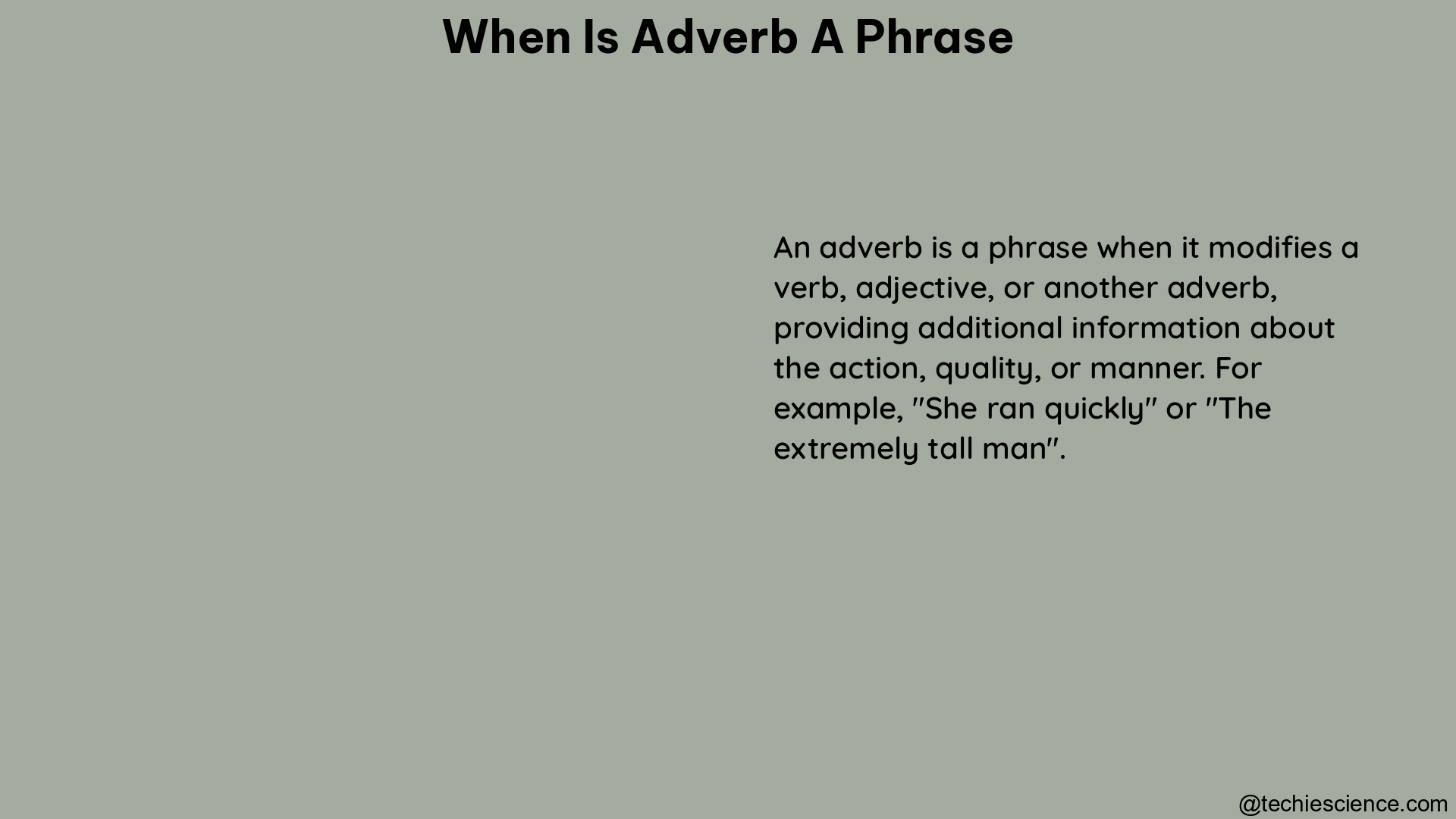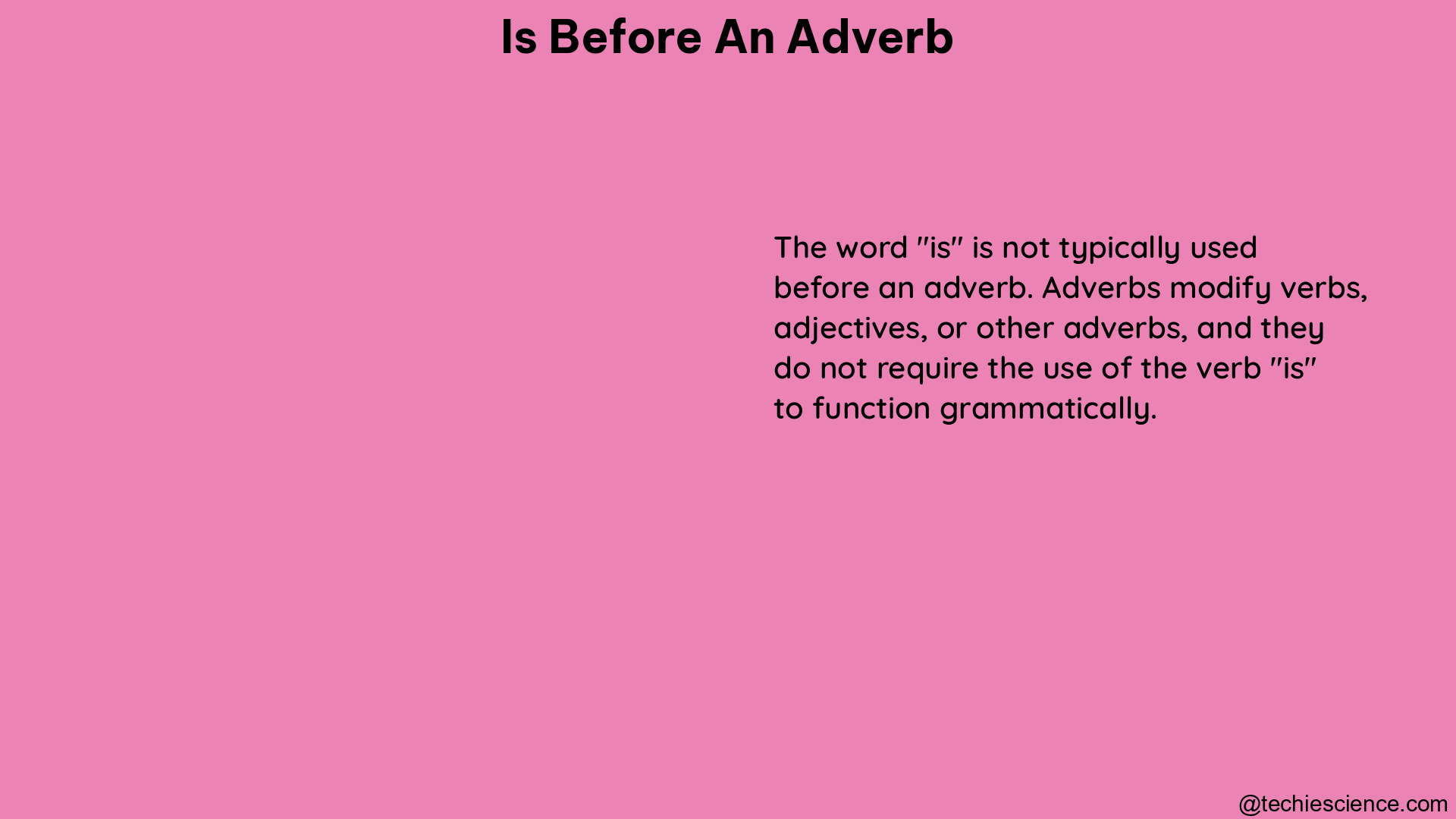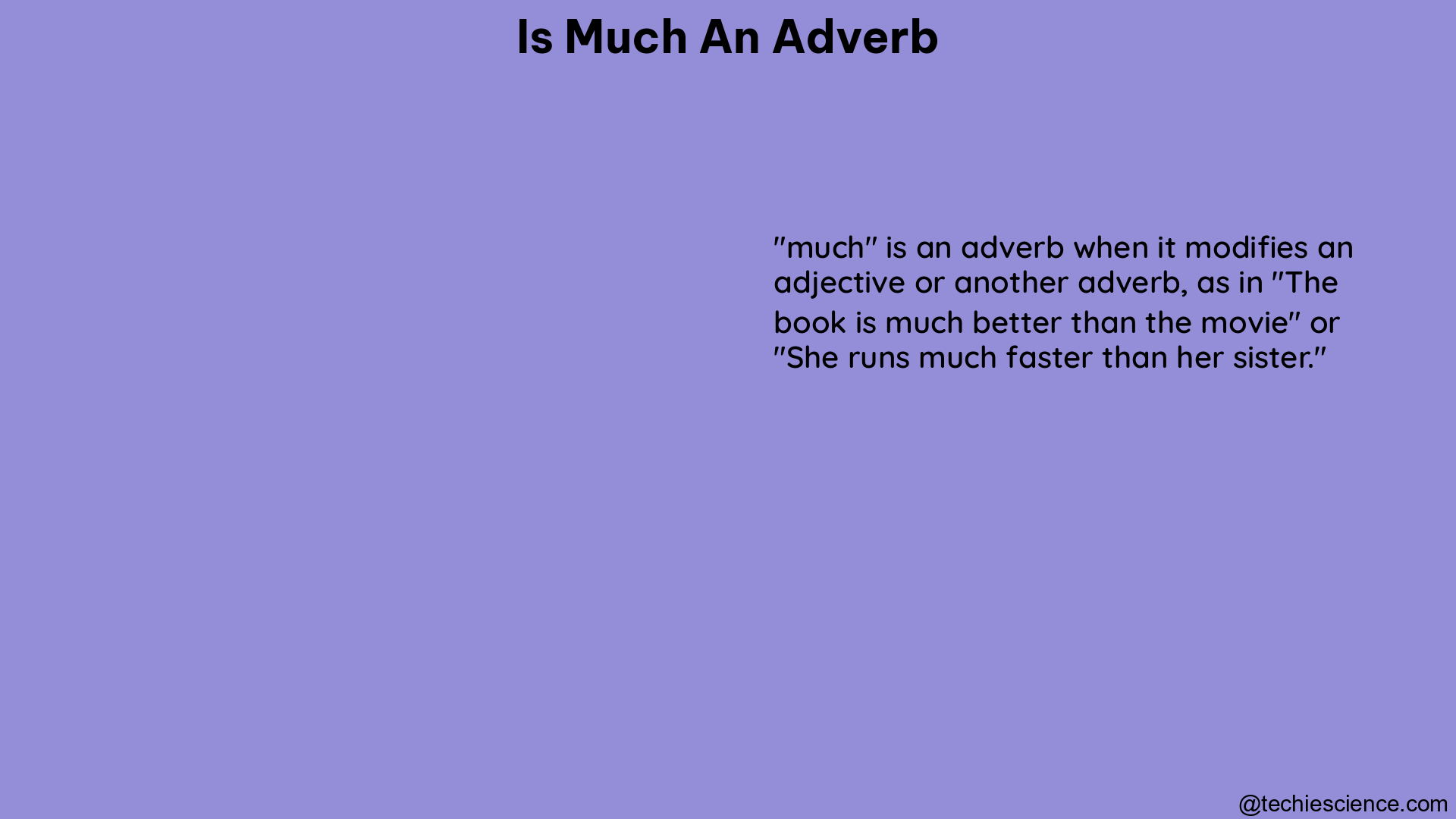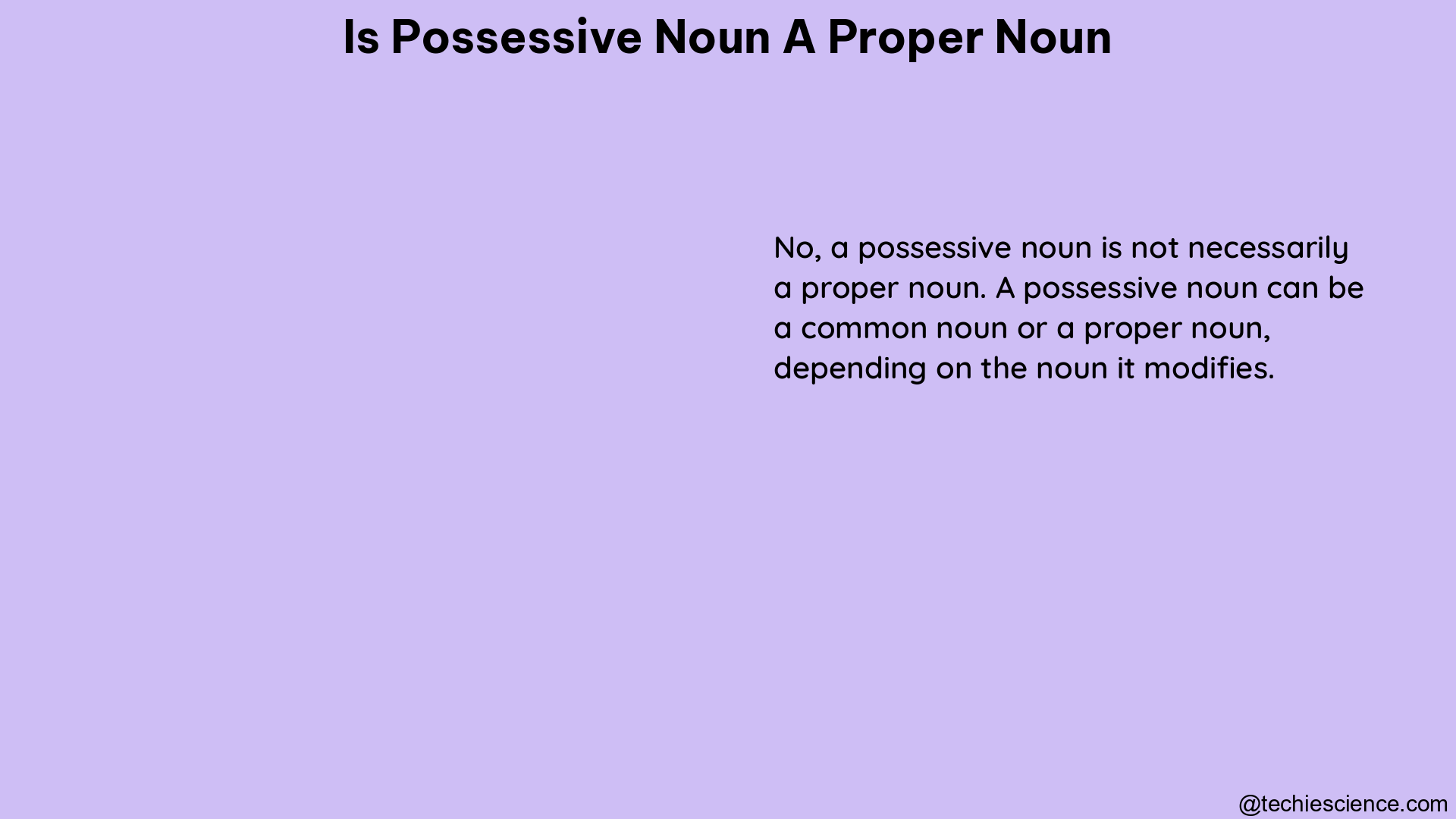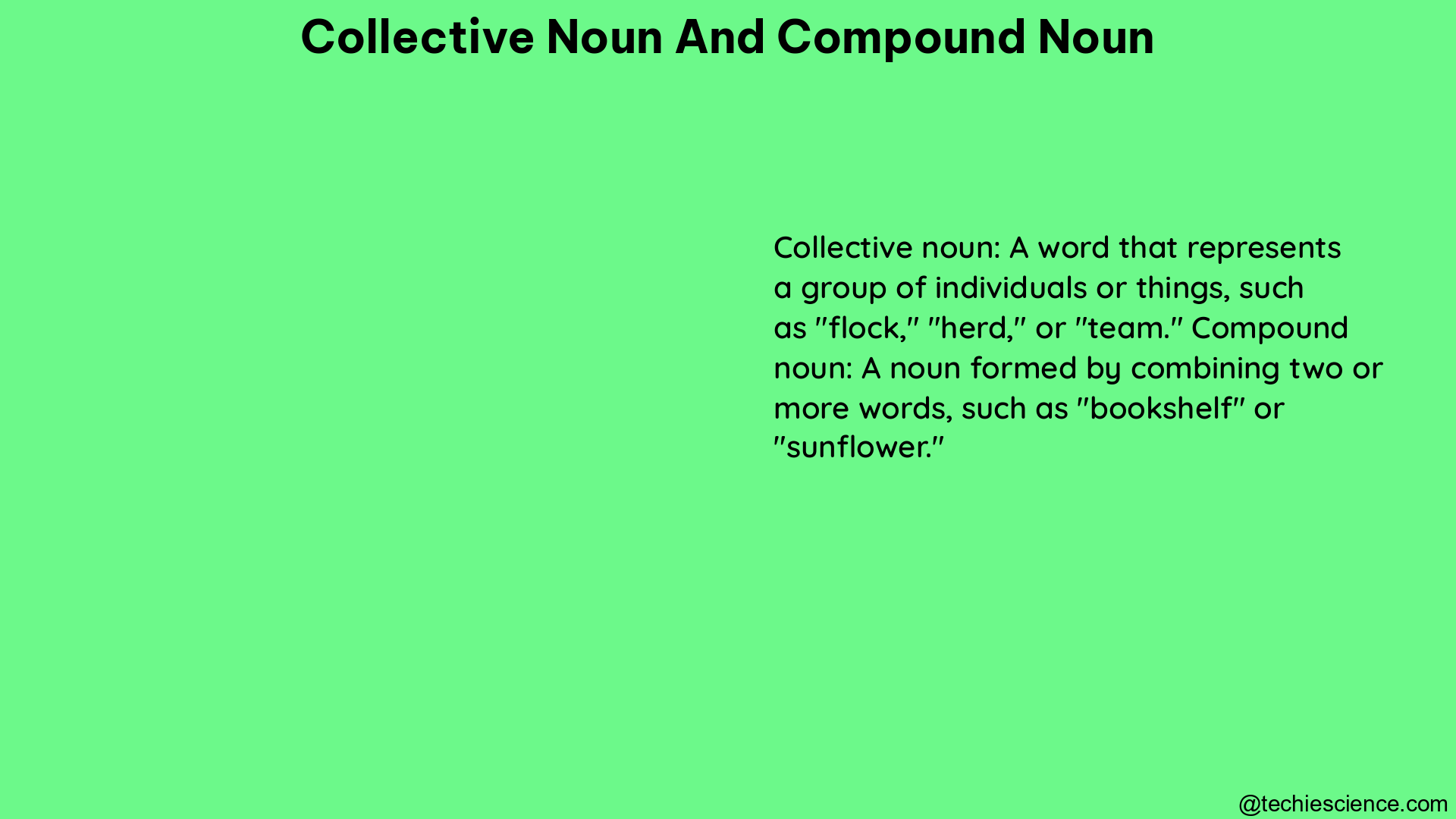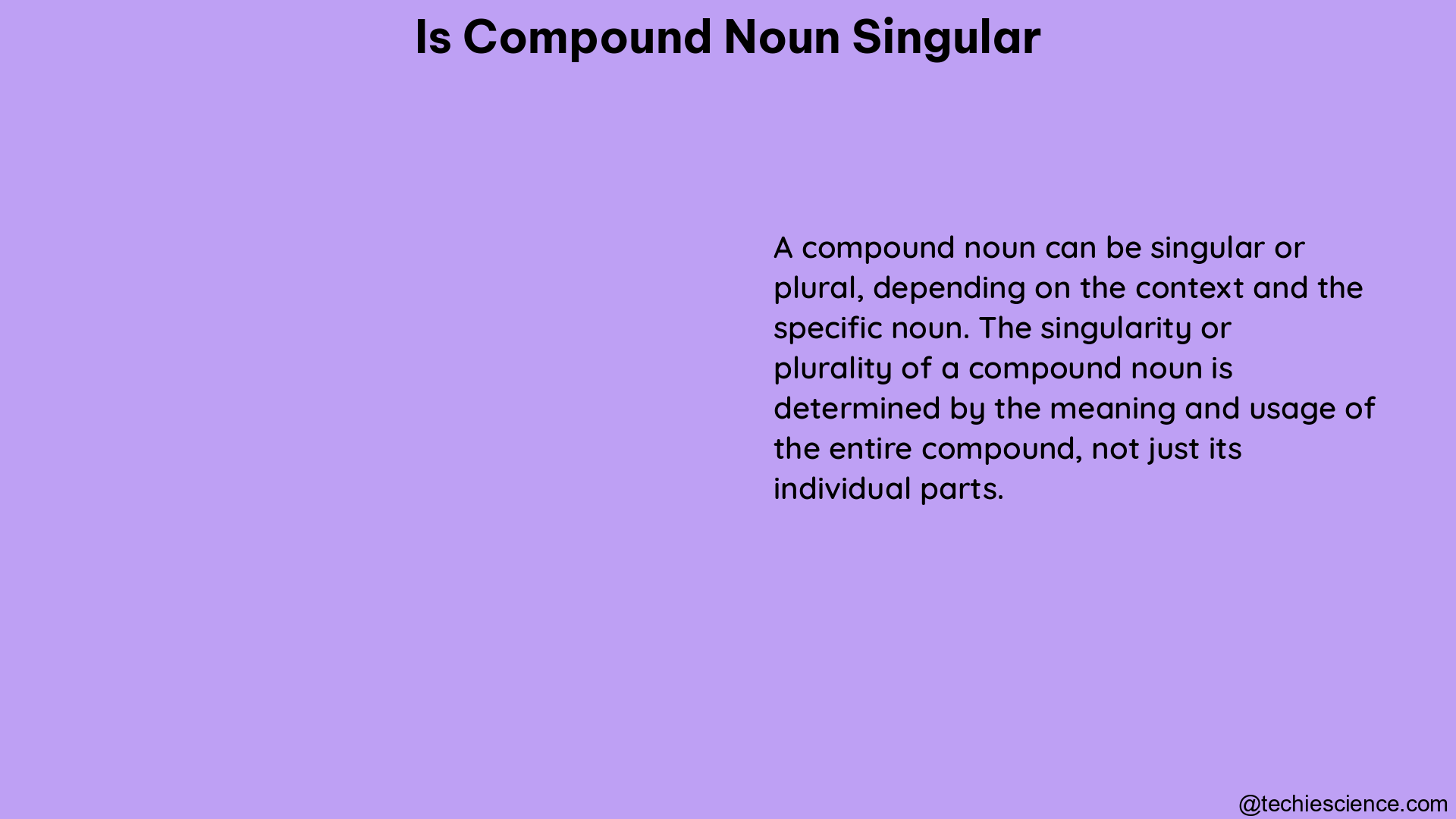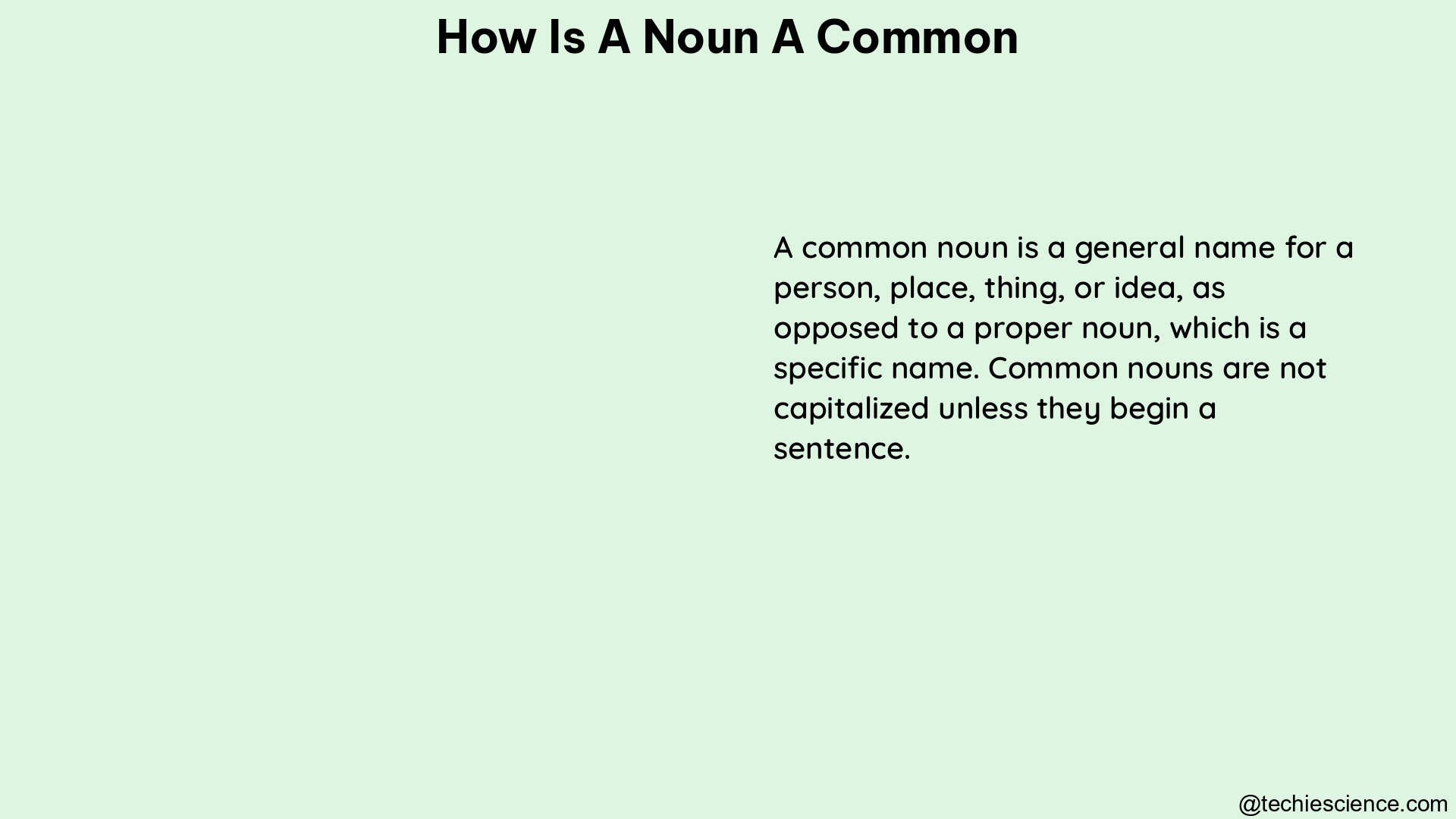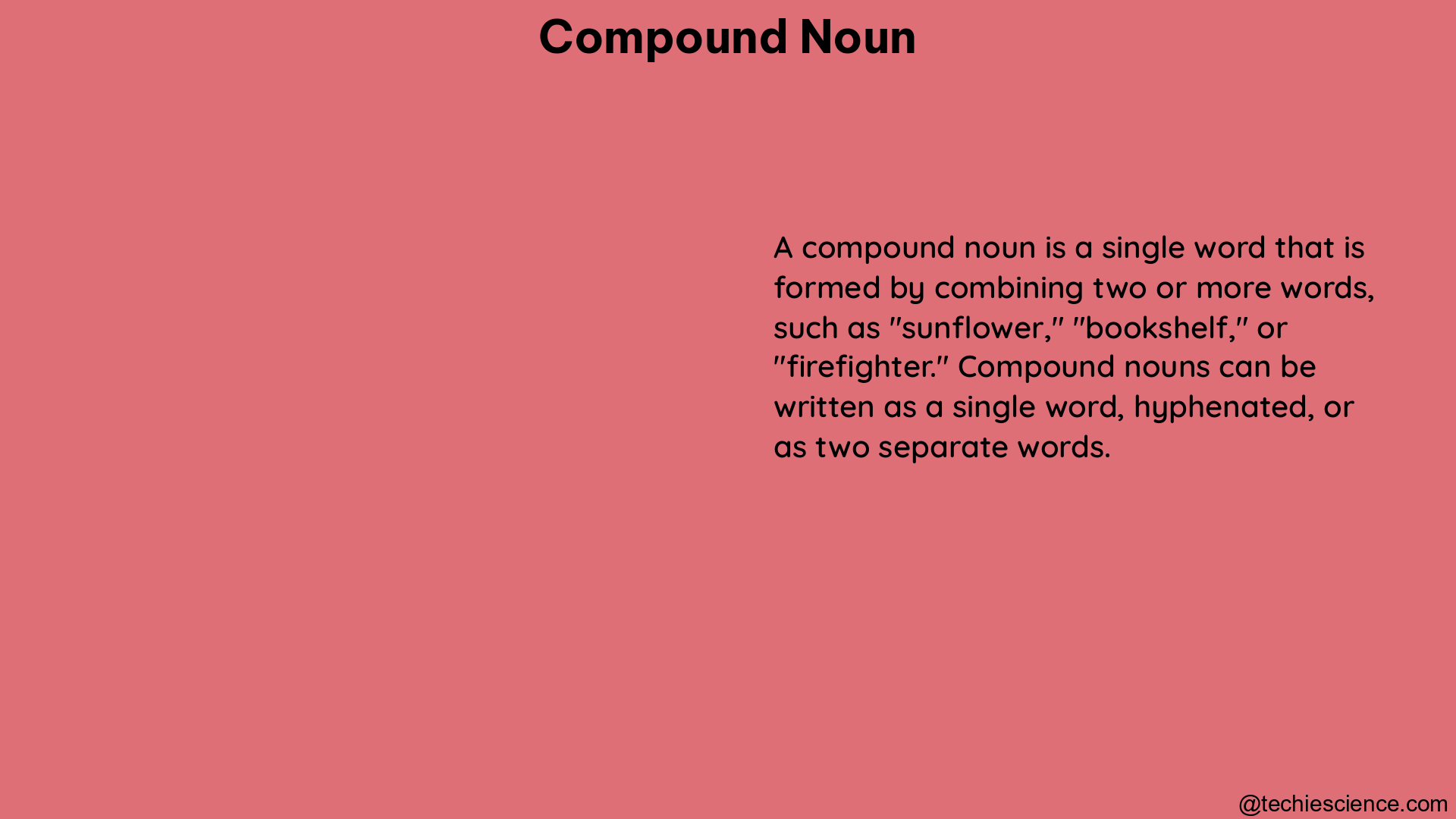Adverb phrases and adjective phrases are essential components of the English language, serving distinct functions in sentence structure. Understanding the nuances between these two types of prepositional phrases can greatly enhance your writing and communication skills. In this comprehensive guide, we will delve into the intricacies of adverb phrases and adjective phrases, providing you with a deep understanding of their usage, characteristics, and practical applications.
Adverb Phrases
An adverb phrase is a prepositional phrase that functions as an adverb, modifying verbs, adjectives, or other adverbs. These phrases provide valuable information about the manner, time, place, frequency, or degree of an action or state. Adverb phrases typically answer questions such as “how,” “when,” “where,” “why,” or “to what extent.”
Characteristics of Adverb Phrases
- Modifying Function: Adverb phrases modify verbs, adjectives, or other adverbs, providing additional details about the action or state.
- Answering Questions: Adverb phrases answer questions related to the manner, time, place, frequency, or degree of an action or state.
- Prepositional Structure: Adverb phrases are composed of a preposition followed by a noun, pronoun, or other prepositional phrase.
- Mobility: Adverb phrases can often be moved around the sentence, similar to adverbs, without significantly altering the meaning.
Examples of Adverb Phrases
- In the backyard: This adverb phrase modifies the verb “found” and answers the question “where.”
- For the rest of the day: This adverb phrase modifies the verb “rest” and answers the question “for how long.”
- With the purple hair: This adverb phrase modifies the verb “was” and answers the question “why.”
Adjective Phrases
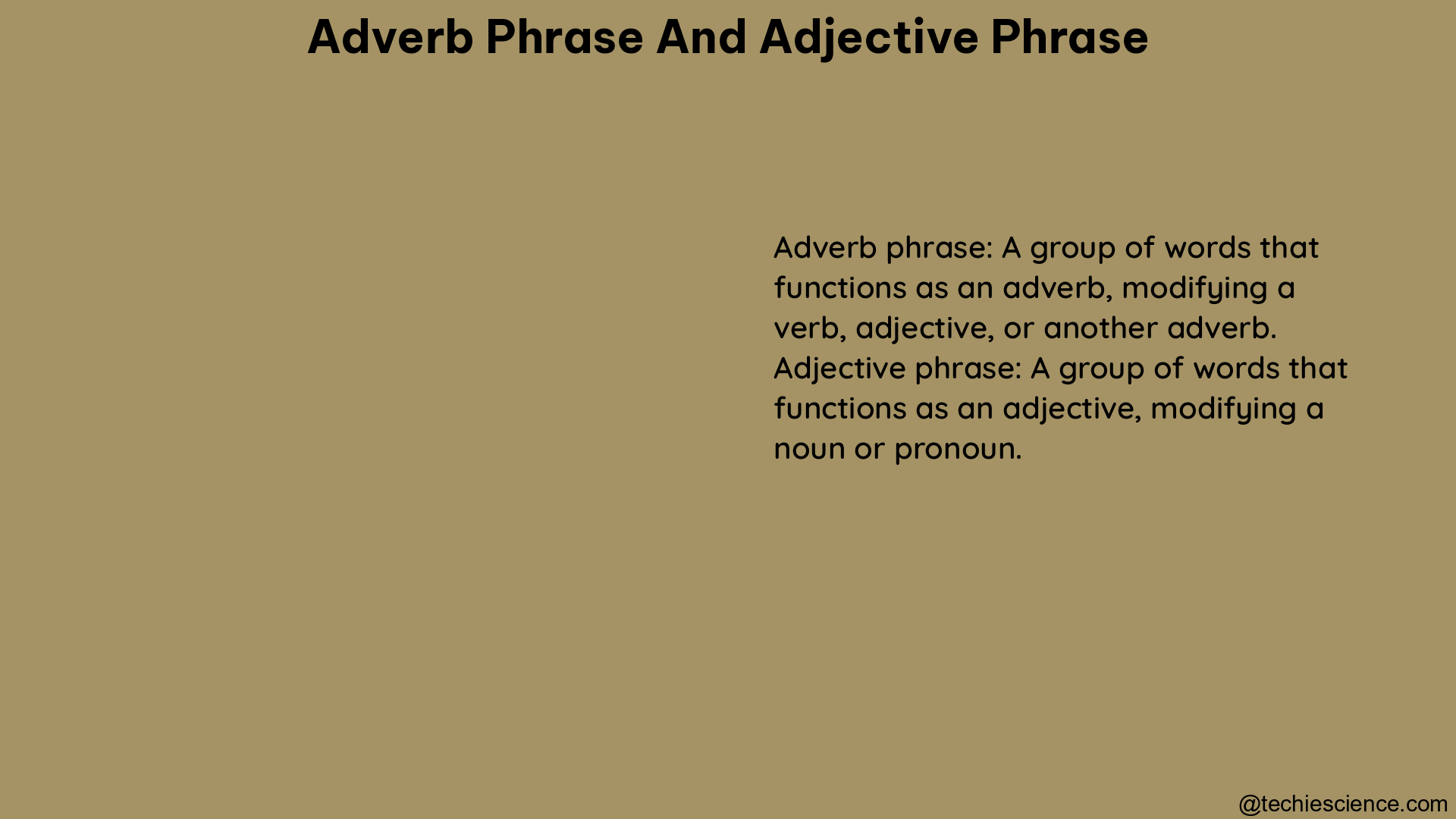
An adjective phrase is a prepositional phrase that functions as an adjective, modifying nouns or pronouns. These phrases provide information about the characteristics, qualities, or properties of the noun or pronoun they modify. Adjective phrases typically answer questions such as “which one,” “what kind,” or “how many.”
Characteristics of Adjective Phrases
- Modifying Function: Adjective phrases modify nouns or pronouns, providing additional details about their characteristics or properties.
- Answering Questions: Adjective phrases answer questions related to the identification, description, or quantification of the noun or pronoun they modify.
- Prepositional Structure: Adjective phrases are composed of a preposition followed by a noun, pronoun, or other prepositional phrase.
- Position: Adjective phrases typically follow the nouns they modify, unlike adverb phrases, which can move more freely within the sentence.
Examples of Adjective Phrases
- On the shelf: This adjective phrase modifies the noun “book” and answers the question “which one.”
- With the loud engine: This adjective phrase modifies the noun “car” and answers the question “which one.”
Key Differences between Adverb Phrases and Adjective Phrases
- Function: Adverb phrases modify verbs, adjectives, or other adverbs, while adjective phrases modify nouns or pronouns.
- Questions Answered: Adverb phrases answer questions about the manner, time, place, frequency, or degree of an action or state, whereas adjective phrases answer questions about the characteristics or properties of a noun or pronoun.
- Position: Adverb phrases can move about the sentence, similar to adverbs, while adjective phrases typically follow the nouns they modify.
Exercises and Examples
Exercise A: Identifying Adverb and Adjective Phrases
Identify the underlined prepositional phrase by writing “ADJ” for adjective phrase or “ADV” for adverb phrase. Then, draw an arrow from each underlined prepositional phrase to the word it modifies.
- The book on the shelf is very interesting.
- The student studied for the rest of the evening.
- The car with the loud engine was speeding down the road.
- The team played with great enthusiasm.
- The flowers in the garden were blooming beautifully.
Exercise B: Underlining Adverb and Adjective Phrases
For each sentence, underline each adjective phrase once and each adverb phrase twice.
- The athlete ran with incredible speed across the finish line.
- The with the vibrant colors painting hung on the wall.
- The teacher explained the concept in a clear and concise manner.
- The of the old house windows were in need of repair.
- The musician played the melody with great emotion on the piano.
